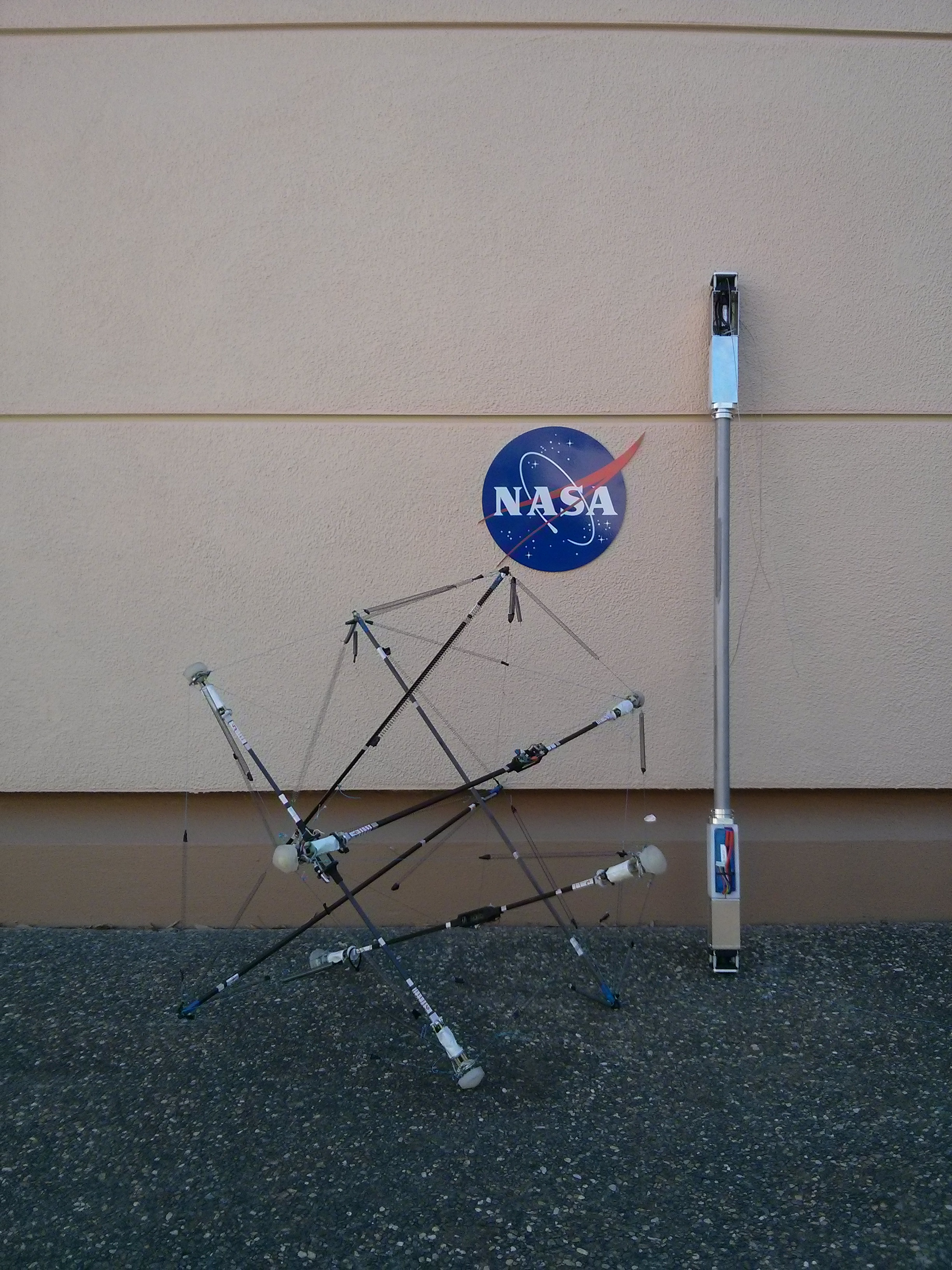NASAunveiled a tumbleweed-esque flexible robot with a deformable exoskeleton in an IEEE Spectrum demonstration. The spherical nature of the robot allows it to land on its own and absorb the shock of the landing impact, saving other mass for more crucial robotic commands. The spacecraft can roll around the surface of planets, and controls its mobility by changing its shape.
This robot is based on the concept of tensegrity, an artistic method of producing structures that are made with rigid components (like hollow cylindrical rods) that are connected with flexible materials (such as cables). With this technology used in the Super Ball Bot, there are no hinges that must be able to endure strain. Sunspiral, one of the creators, stated that “with a tensegrity structure, the entire structure shares the burden of reducing that stress, which is what you see in human bodies.” The cables connecting the robot’s rigid components would shorten and lengthen, enabling motion. Since the parts are malleable, the robot can more readily intermingle with its environment and avoid getting stuck in difficult conditions, such as sand, that challenge normal rovers on wheels.

Image via Spectrum IEEE
When launched, the robot would be compacted. Once the bot reaches a terrain, the robot would open and absorb the impact. The first potential task for the Super Ball Bot would be to land on Titan, Saturn’s moon. The moon has an atmosphere that can slow the spacecraft’s travel path so that it can be dropped from 100 kilometers above the surface.
The developers are still mastering the robot’s control problem, for even the slightest change in the length of a connector can result in a large movement. Unlike the Mars rover, engineers would not have to command the robot remotely from Earth. For the issue of control, the engineers used a physics stimulator to test the robot’s interaction with different ground terrains, like hills and obstacles.
Story via Spectrum IEEE
Advertisement
Learn more about Electronic Products Magazine





